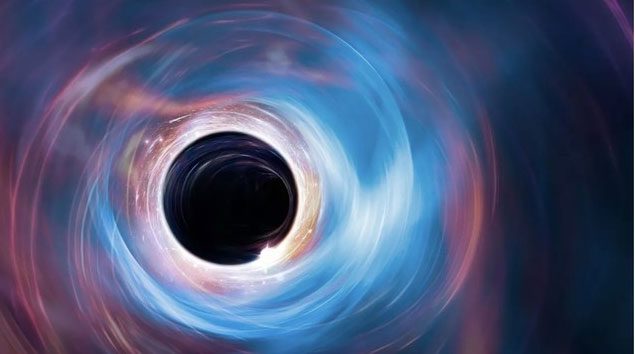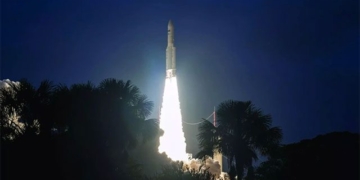If we look at Earth in the universe, our solar system seems to be surrounded by billions of stars in the Milky Way. But if we look even further, can we find evidence that we are in something even more magnificent, such as a black hole?
Black holes are regions in the universe where gravitational forces are so strong that they warp the time and space around them; once inside, nothing – not even light – can escape.
In one scenario, a black hole could have swallowed Earth long ago. But if this happened, the gravitational forces would be catastrophic, says Gaurav Khanna, a black hole physicist at the University of Rhode Island.
Would Time Slow Down?
As Earth approaches a black hole, time would slow down. Depending on the size of the black hole, matter could be stretched into shapes resembling spaghetti. Khanna states that even if the planet survived this “spaghettification,” Earth would be bound to a small, dense singularity, where it would be incinerated by the pressure and temperature of an immeasurable gravitational force.

A black hole is so compact that nothing can escape its gravitational pull, not even light.
Therefore, we can rule out the possibility that a black hole swallowed Earth at some point in its history. Khanna says it would have been erased in an instant. However, there is another way that Earth could have ended up in the belly of a black hole: It could have formed there.
Khanna explains: “A black hole looks very much like a reverse Big Bang… The mathematics seems similar. While a black hole collapses at a very small, dense point, the Big Bang exploded from such a point.”
One hypothesis suggests that the Big Bang itself was the singularity of a black hole in a larger parent universe. The dense center compressed and compressed, “until somehow it exploded and a nascent universe formed inside the black hole.”
This theory, called Schwarzschild Cosmology, suggests that our currently expanding universe inside a black hole is part of a parent universe.
Could Universes Exist Within Universes?
Theoretically, this scenario implies that universes could exist within universes, much like Russian nesting dolls, and traveling back through a black hole – a possibility that may be impossible, as even light cannot make the reverse journey – would unlock unknown realms, Khanna states.
However, this theory is difficult to prove; nothing can return through the event horizon of a black hole.
But if Earth is inside a black hole, experts have some estimates about the size of this cosmic abyss.
Scott Field, an associate professor of mathematics at the University of Massachusetts Dartmouth, USA, says: “If we are inside a black hole, it must be extremely large. Earth couldn’t just be crammed into a black hole the size of a planet or even a solar system-sized black hole. If that were the case, scientists would take notice.”
There would be observable signs of the black hole’s rotation. Or, we would see subtle distortions caused by extreme gravitational forces – such as time slowing down and matter stretching…
For example, if Earth existed in a black hole the size of Earth, humans would notice the effects of tidal forces, such as spaghettification and time dilation, as they moved from one point to another on the planet, Field, who works on gravitational modeling simulations, including black hole collisions, explains.
Thus, any black hole that Earth calls home must be vast, universe-sized, and so immense that we cannot move far enough or fast enough to detect the gravitational distortions, Field states.
Khanna notes that from inside a black hole in the universe, people on Earth “would have no way of knowing that another parent universe exists.” We would know nothing about it. So, it must be said that searching for our universal predecessors would be very challenging. However, “it would be lovely” if this hypothesis were true.




















































